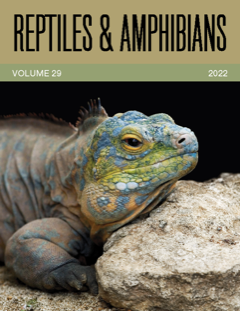Living near water: Ecological observations on the Ecuador Sipo, Chironius grandisquamis, (Peters 1869) (Serpentes: Colubridae), in the Middle Magdalena River Valley, Colombia
DOI:
https://doi.org/10.17161/randa.v29i1.16026Keywords:
Arboreal habits, microhabitats, natural history, Neotropical snakes, stream-dwelling speciesAbstract
More than 40 species of snakes inhabit the humid forests of the Middle Magdalena River Basin of Colombia, yet studies on the basic aspects of snake ecology and natural history in this region are scarce. We searched for Ecuador Sipos (Chironius grandisquamis) during six years (2014–2019) of 6–24-day visual-encounter surveys by day and night in both rainy and dry periods. In 2,967 person-hours, we recorded 16 individuals, half during rainy and half during dry periods. Fourteen of the 16 encounters were in the evening and two in the morning. Snakes recorded during the day were foraging on the ground, whereas those recorded at night were inactive and perched in vegetation. Most inactive individuals had selected perches along streams flanked by riparian forests; ten were in shrubs and four in trees on branches 120–600 cm above the ground. We also record predation on a northern rainfrog (Craugastor metriosistus) on the forest floor during the day.
Downloads
Published
Issue
Section
License
Copyright (c) 2022 Julián Andrés Rojas, Mateo Marín Martínez

This work is licensed under a Creative Commons Attribution-NonCommercial 4.0 International License.
Copyright is held by the authors. Articles in R&A are made available under a Creative Commons Attribution-NonCommercial 4.0 International license.

